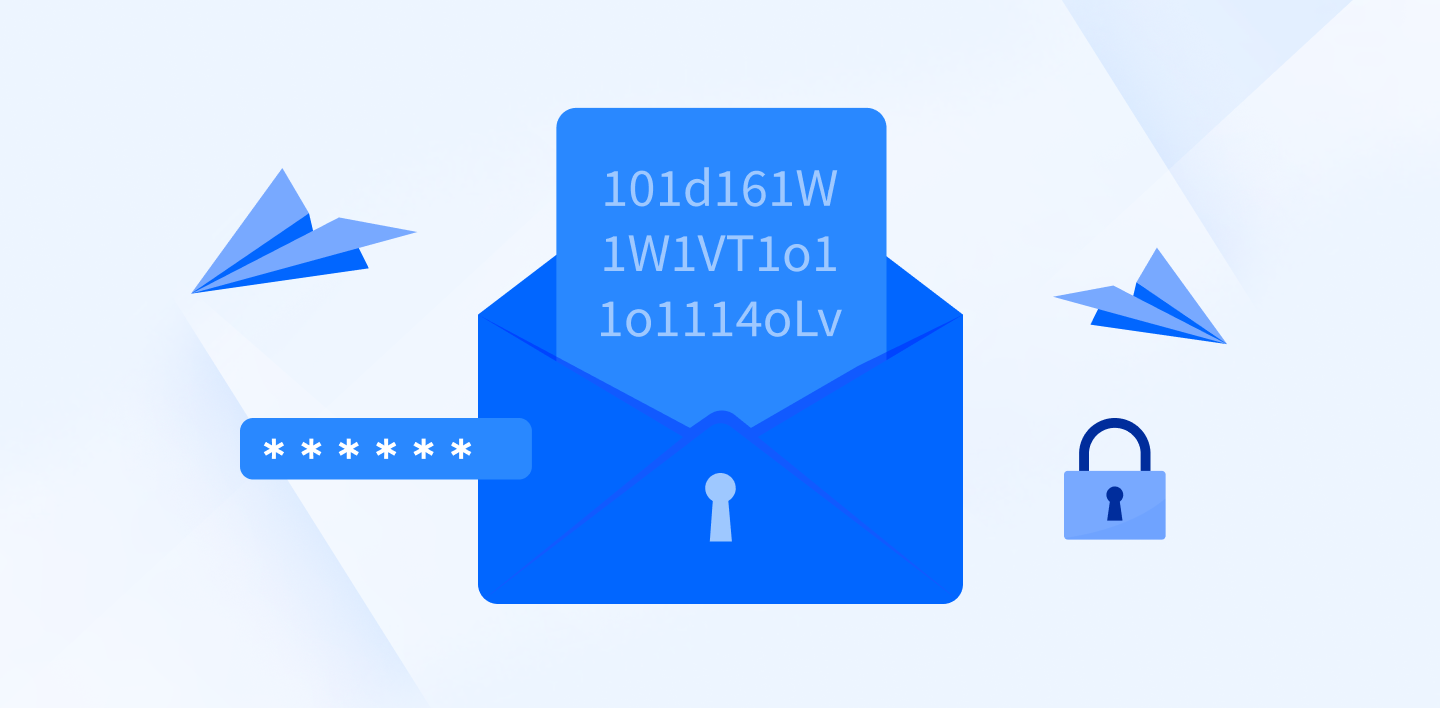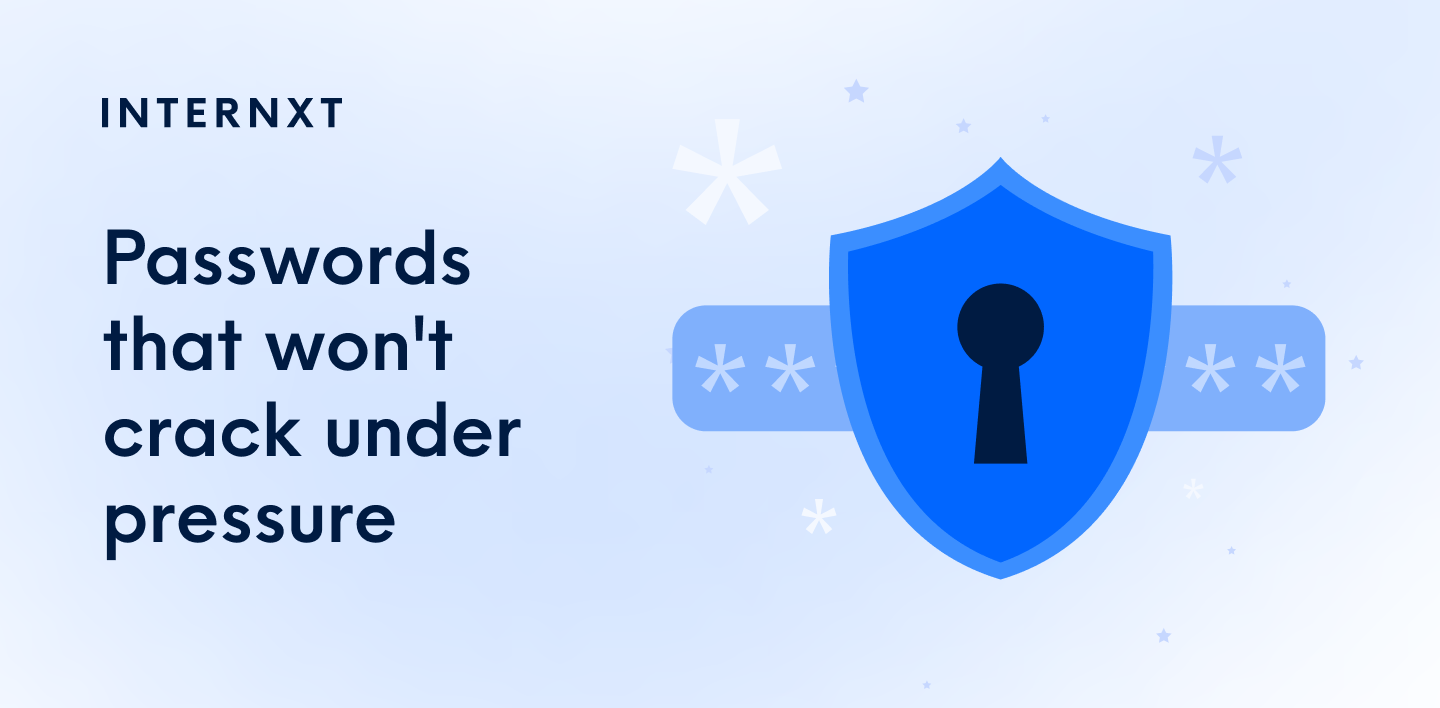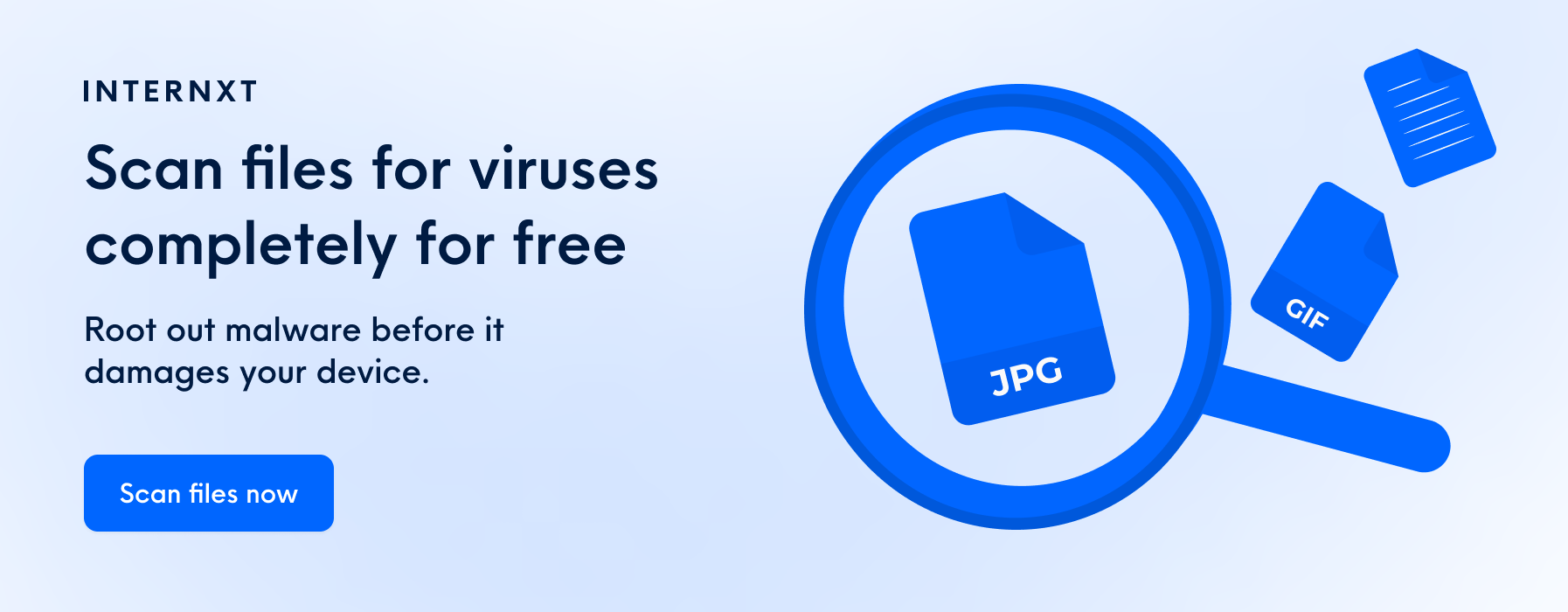Secure Your Digital Footprint: Unleashing the Power of Email Encryption

In the digital realm, email communication has become the standard form of communication in our personal, work, and education.
Due to the information we consistently send via email, they could easily fall into the wrong hands if left unprotected, bringing about dire consequences such as identity theft and financial losses.
To avoid such nightmares, you can use a temporary email to keep your email safe from spam or an encrypted email to protect the contents of the emails you send.
By encrypting your emails, you're boosting your security even further by reducing the odds of unwanted prying eyes and safeguarding the privacy of your communication.
Protecting your digital footprint begins with secure email practices. Recognizing the role of encrypted communication is just the start—every action online contributes to the tapestry of your digital identity.
Email Encryption and Its Benefits
To secure your emails effectively, the best place to begin is by creating a firm base on which to build your knowledge. The following benefits will help you understand email encryption to implement it effectively in your future security practice.
What is Email Encryption?
Email encryption is a method used to safeguard the content of emails from being accessed by unauthorized individuals. It involves scrambling the email message into a format that can only be understood by the intended recipient, making it unreadable to anyone else.
Here's a detailed explanation of how email encryption works:
- Encryption process initiation: When a sender wants to send an email, they typically use specialized email encryption software or services. This software generates two encryption keys: a public key and a private key.
- Public key encryption: The sender's software uses the recipient's public key to encrypt the email. The public key is freely available and can be shared openly. It converts the email's text into a complex code known as ciphertext.
- Email transmission: The encrypted email is then sent over the Internet to the recipient's email server. The encrypted email remains secure during this transmission because it cannot be deciphered without the private key.
- Private key decryption: When the encrypted email reaches the recipient's email server, it is stored until the recipient accesses their mailbox. Upon retrieval, the recipient's email software uses its private key to decrypt the encrypted email.
- Secure message display: Once decrypted, the email is displayed to the recipient in its original, readable format. The recipient can now read and respond to the email's content.
It's important to note that encryption and decryption rely on powerful cryptography algorithms and complex mathematical operations. These algorithms ensure that even if someone intercepts the encrypted email during transmission, they require the private key to decrypt and understand its content.
By employing email encryption, individuals and organizations can enhance the security and privacy of their email communications, especially when sensitive or confidential information is being shared.
The Email Encryption Methods: Symmetric and Asymmetric
Symmetric encryption: This method relies on the same key for encryption and decryption, like a secret code known only to the sender and the recipient.
Asymmetric encryption: A step ahead, asymmetric encryption plays with two keys - a public key for encryption and a private key for decryption. Often referred to as public-key cryptography, it provides double-layered security.
How Does Public and Private Key Encryption Work?
Your public key is available to anyone wanting to send you a message, and this recipient will use this key to encrypt the message. When you receive it, you use your private key (strictly secret and secure) to decrypt it. It's a unique way to guarantee secure communication, even in insecure environments.
The Role of Digital Certificates
Digital certificates verify the credibility of the sender. These certificates carry the public key and are signed by a trusted certificate authority. It’s like a stamp of authenticity, assuring the public key belongs to the genuine sender.
How does this benefit you?
- You're protecting sensitive information from unwanted audiences.
- You're ensuring the integrity of your data by preventing unauthorized alterations.
- You're verifying the sender's authenticity, reducing the risk of phishing or spoofing attacks.
Email encryption empowers you to take control of your online communication. After all, your digital security is in your hands.
Best Practices for Email Encryption
Knowing the ins and outs of email encryption is just the first step. Let's take this knowledge further with some extra email security tips and see how to integrate encryption into our daily email usage.
Create Strong Passwords and Protect Private Keys
The foundations of cybersecurity and protecting your accounts start by creating a strong password. To meet the criteria of an effective password that isn’t vulnerable to cyberattacks, it must be: complex, unique, and random.
The best way to achieve this is by using a password generator, which will instantly create unique passwords far less vulnerable to the brute force and dictionary attacks that hackers commonly use to try and crack your password.
Remember to avoid using personal information or commonly used passwords or phrases to protect your email security. Any passwords you create with a password generator can be stored in a reputable password manager, so you don’t have to worry about remembering various and complex passwords.

Regularly Update Encryption Software and Protocols
Stay updated with encryption software and protocols, as they must be regularly updated to address any vulnerabilities or weaknesses discovered over time.
Take the time to regularly check for updates from the software provider or service you use and install them as soon as they become available. This ensures that you have the latest security patches and enhancements.
By constantly updating your software, you stay ahead of cybercriminals as they continuously develop new techniques to exploit weaknesses in encryption systems. Therefore, you can stay one step ahead of their tactics by keeping your encryption software and protocols up to date.
Encrypt Attachments and Embedded Content
Encrypting just the email text is not enough. Attachments and embedded content can also contain sensitive information that needs protection. Encrypting these components ensures that all parts of your email are secure. Use encryption features provided by your email client or specialized encryption tools to encrypt attachments before sending them.
Preventing unauthorized access by encrypting attachments adds an extra layer of security, making it difficult for hackers to access the content even if they intercept the email. It reduces the risk of unauthorized individuals accessing confidential documents, images, or links you share via email.
Two-Factor Authentication: Your Safety Net
Two-factor authentication (2FA) adds another step to the login process. In addition to entering your password, you must provide a second verification form, such as a unique code sent to your mobile device. This makes it much more difficult for unauthorized individuals to access your email account.
Even if your password is compromised due to a data breach or a phishing attack, 2FA acts as a safety net. Without the secondary verification code, attackers won't be able to access your account. It adds an extra barrier of protection to prevent unauthorized access to your encrypted emails.
Enable Email Forwarding Protection
Configure your email settings to turn off automatic email forwarding. This ensures that no emails are forwarded without explicit authorization, minimizing the risk of unauthorized access to your sensitive information.
Review your email forwarding settings to ensure they have not been tampered with. Check for any unfamiliar forwarding rules or addresses that may indicate unauthorized access. You can quickly detect and mitigate any potential security breaches by proactively monitoring these settings.
Implement Email Data Loss Prevention (DLP)
Define sensitive data detection policies and establish clear guidelines and rules for detecting sensitive data within emails, such as identifying specific patterns or keywords that indicate sensitive information, which are typically:
- credit card numbers
- social security numbers
- confidential corporate data
Any outgoing emails containing sensitive information should be encrypted, so be sure to configure your email DLP System to encrypt emails containing any sensitive information before they are sent to protect them from unauthorized access.
By defining these detection policies, you can automatically identify and act appropriately on emails containing sensitive data.
Train Employees on Email Security Best Practices
Train employees to recognize phishing attacks such as unexpected attachments, misspelled URLs, or requests for sensitive information. By improving employee awareness, it can mitigate the risk of successful phishing attempts and protect sensitive data.
Also, instruct employees to exercise caution when clicking links or opening email attachments, especially from unknown or suspicious sources. Encourage them to verify the sender's authenticity and to hover over links to check their destination before clicking.
By promoting a culture of cautiousness, you minimize the risk of malware infections and malicious activities through email-based attacks.

Regularly Back Up Your Encrypted Emails
Regularly backup your encryption keys in a secure location. In case of a hardware failure, loss, or compromise, having backups of important files ensures you can still access and decrypt your encrypted emails. Store the backup keys in an offline, encrypted storage medium or use a secure cloud storage service to protect against data loss.
Implementing a regular backup schedule for your encrypted emails ensures that even if your email system experiences a technical issue, accidental deletion, or a cyber-attack, you can restore your emails from the backup and continue your operations without significant data loss.
Use a Trusted Email Service Provider with Built-in Encryption
Choosing a trustworthy email service provider (ESP) with end-to-end encryption can significantly simplify the encryption process. These providers ensure that emails are encrypted when they leave your device until they reach the intended recipient, guaranteeing your data is protected during transit.
An extra benefit of using an ESP with integrated encryption is the transparent nature of the process. Users often don't need additional steps to encrypt their emails, as the system handles them automatically. This reduces the likelihood of user errors, such as forgetting to encrypt a sensitive email manually.
Monitor and Audit Email Access Logs
Regularly monitor and audit your email access logs to detect any unusual or unauthorized activities. Irregular login times, multiple failed login attempts, or access from unfamiliar locations can be indicators of potential breaches or attempted hacks.
Many modern email platforms allow users to set up real-time alerts for specific trigger events, like login from a new device or location. By enabling such notifications, you can be instantly notified of potentially suspicious activities, allowing you to take swift corrective action, such as changing your password or enabling 2FA.
What Are The Common Mistakes in Email Security?
As email communication has become an everyday occurrence in our lives, this also means it is a prime target for hackers to steal the contents of your personal or private emails. It is imperative, therefore, that you avoid common cybersecurity mistakes to keep your email security tight.
One of the most prevalent security mistakes is reusing passwords across different platforms and accounts. While it may seem convenient, this habit can render all your accounts vulnerable if just one is compromised. A cybercriminal who obtains one password can then gain access to all associated accounts.
Ignoring Software Updates
Many users often delay or ignore updates to their email clients or operating systems. These updates often contain vital security patches addressing known vulnerabilities. You need to update promptly to avoid exposing your system to these vulnerabilities.
Clicking on Suspicious Links
Phishing attacks often come in the guise of legitimate-looking emails. However, they contain malicious links that can lead to malware installations or credential theft. Always be skeptical of unexpected emails and verify links by hovering over them to see the URL.
By incorporating these useful cyber hygiene tips and avoiding mistakes in email encryption, you can significantly enhance the security and privacy of your email communications.

Make Email Encryption your Digital Ally
Looking ahead, we foresee an even more significant role for email encryption in secure digital communication. We will need more advanced and user-friendly encryption tools with the increasing sophistication of cybersecurity threats and the growing digital interdependence.
The future of secure digital communication may involve machine learning and AI for adaptive encryption, biometrics for verification, or quantum-resistant algorithms for super-secure encryption. Whatever the future holds, it's evident that email encryption will continue to be a vital aspect of it.

